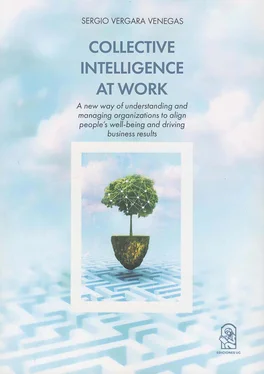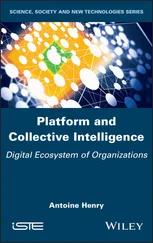Organizational climate is, then, a reality that we cannot observe, but that has a tremendous impact on the organization’s performance and must therefore be at the center of the management’s attention. The basic recommendation is to manage the organizational climate in such a way as to move from the most superficial levels of the relationship to the deepest, from the purely social to what is more proper and genuine of the work itself. The road ahead is a minefield, because no matter how much care we put into the relationship, we are still going to have conflicts and disagreements. We are going to make mistakes and fall into contradictions. Many times, we are not going to realize it until the damage to the relationship has already been done. Hence, all prevention is of little value. This is also why Chapter 6 is so valuable, because it warns us of the positive and negative behaviors (the dos and don’ts) for each level of maturity.
Another recommendation of great relevance is to recognize that there are different roles in the management of the organizational climate, and that each person must assume their role, since all contribute to the climate that ultimately prevails in the organization. Senior managers must be role models and define the rules of the game. Middle managers (or leaders), who are in direct contact with people lower down in the organization and are key in relationships, must act as channels of communication. Finally, individuals must show a positive disposition to be part of the team and participate. Otherwise, all efforts to achieve a good organizational climate will fail. These roles change as one moves up the organizational climate maturity scale.
In short, those responsible for an organization must make their best efforts to manage the organizational climate. This means moving towards deeper and deeper levels of maturity and ensuring that each person in the organization assumes their due responsibility, at every moment and in every circumstance, in the effort to build, ideally, “the best organizational climate in the world.”
Reading this book and analyzing its recommendations is an essential starting point to managing the organizational climate of a company or organization.
NICOLAS MAJLUF
Professor
Department of Industrial and Systems Engineering
Pontificia Universidad Católica de Chile
Monday, December 8, 2014
INTRODUCTION
Collective intelligence
Just as science has proven that intelligent people are not those with the most neurons, but those whose neurons are best interconnected, so it is in organizations.
In his book Las culturas fracasadas, el talento y la estupidez en las sociedades, Marina (2010) points out that shared intelligence is the result of the interaction between individual intelligences, since human intelligence is structurally and functionally social. For this author, culture is the result of social intelligence and the answer to the essential problems of life. Therefore, an intelligent society is that which is capable of generating good solutions to universal problems, such as life, production, power, the relationship with the community, conflicts and the family, among others. In contrast, he considers societies “stupid” when they create more problems than they solve, destroy community capital and weaken the vital possibilities of their citizens. This can happen because of what he calls intellectual fracture, which is the distance caused by the inability to articulate or make individual intelligence and its interests compatible with shared intelligence.
De Ugarte (2010), a Spanish economist who publishes his books online for free, has highlighted the power of an interconnected society, which today has resources that allow to find a common space for individual intelligences and generating collective spaces:
We live in a highly interconnected world, where interconnectivity has increased at unthinkable speeds, as Eric Schmidt, former CEO of Google pointed out:
There was 5 Exabytes of information created between the dawn of civilization through 2003, but that much information is now created every 2 days (...) If I look at enough of your messaging and your location, and use artificial intelligence, we can predict where you are going to go. Show us 14 photos of yourself and we can identify who you are.” (p.16)
People are connecting faster and more frequently with each other; however, how can we ensure that not only individuals are more effective, but the whole group? How can a team, an organization or a society achieve replicable mechanisms to effectively address the challenges in their environment?
Based on his experience in consulting with various groups and organizations in Latin America, this author proposes that in order to create collective intelligence, you need to get a significant amount of people to:
1. Have a shared understanding of what the challenges are and the ways to address them.
2. Be clear about what their role is within this challenge and acquire the skills to tackle it.
3. Be emotionally committed to a shared purpose.
In the technical world, dominated by the classical scientific method, there is a tendency to think that once we find the answer, the problem is solved. This is true when it is a problem whose solution depends on knowledge or experience. For example, if a car stops working and we can find the fault, we have solved the problem. That is the case in countless other problems such as repairing a water heater or solving a mathematical problem. This same logic tends to be extrapolated to human domains. In many cases, we tend to believe that once we have acknowledged the “communication problem,” we have found the root cause and therefore solved the communication dilemma between two people or a leader and their team. It may seem simple and obvious to us. However, we forget that the people involved in this problem, which can be easily solved by “communicating better,” don’t apply this solution because they probably don’t know how to do it effectively, at least not yet. In other words, what seems an obvious answer requires a whole learning process for several people that will probably take time and may not even be entirely successful.
The challenge is not only to know what needs to be done, but also how to get a group of people in different roles and with different levels of power and understanding to be “on the same page” about what they understand as a problem and therefore what needs to be done, how to do it, who does it and the commitment it entails. What makes this even more challenging is that, at this point, they do not have the same understanding, or they haven’t found a way to talk together to even put the issue on the table and analyze it without fighting, discrediting, or ending in conflict.
Creating collective intelligence implies helping the whole system to mature simultaneously, that is, to acquire skills to find effective solutions not only as individuals, but as a whole.
The principles of collective intelligence are the basis of the organizational climate improvement model developed in this book, which seeks to provide an applied view so all individuals and teams that wish to create a sustainable improvement in their organizational climate can do so.
Why Work on Organizational Climate?
There are many studies that show the value of workplace well-being and how people who are happy are also more productive (Lewis, 2011). Nowadays, the value of investing in a positive environment is not under discussion, especially in a society where the value of respect for diversity and work-life balance are topics that are usually on the table of governments and businesses. But beyond that, the impact that this aspect has on the business and the achievement of results has also been explored in depth. The expression “social capital” reflects this very well. Alder and Kwon point out that social capital is equivalent to the value of internal networks, as they reduce transaction costs due to increased trust between people. Social capital represents a platform that facilitates flexible, fast, and coordinated action. It stimulates individual learning and commitment, enhancing organizational performance (Alder y Kwon, 2002, as cited in Lewis, 2011).
Читать дальше












